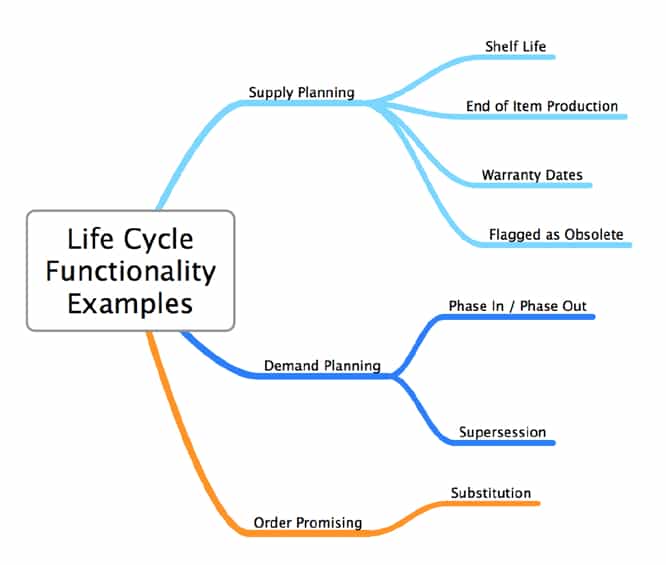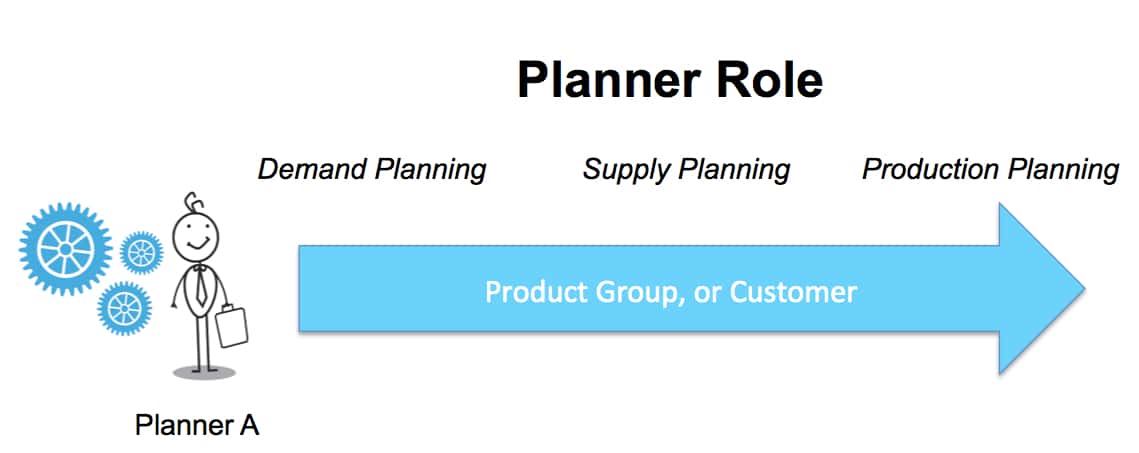What if Your Planning Roles are Not Setup for APO?
Executive Summary
- Background of planning role organization at a client.
- Companies that have planning roles assigned by product group or by customer.
- How SAP APO and advanced planning, in general, have planning roles setup.
- How does master data maintenance change with the implementation of advanced planning systems?
Introduction
APO is designed around a role segmentation that is standard for advanced planning and has been unchanged since I began working in advanced planning in 1998. Essentially the planning roles at a company are designed around the modules. Therefore, a demand planning planner focuses on the tasks within the demand planning module, a supply planning role for SNP, etc. However, at some companies that may be in an ERP or have an ERP system but be in a pre-ERP stage (for the various stages and their implications, see this article.)
Our References for This Article
If you want to see our references for this article and other related Brightwork articles, see this link.
Notice of Lack of Financial Bias: We have no financial ties to SAP or any other entity mentioned in this article.
- This is published by a research entity, not some lowbrow entity that is part of the SAP ecosystem.
- Second, no one paid for this article to be written, and it is not pretending to inform you while being rigged to sell you software or consulting services. Unlike nearly every other article you will find from Google on this topic, it has had no input from any company's marketing or sales department. As you are reading this article, consider how rare this is. The vast majority of information on the Internet on SAP is provided by SAP, which is filled with false claims and sleazy consulting companies and SAP consultants who will tell any lie for personal benefit. Furthermore, SAP pays off all IT analysts -- who have the same concern for accuracy as SAP. Not one of these entities will disclose their pro-SAP financial bias to their readers.
This means that they either use or slightly use the basic demand, supply, and production planning capabilities in SAP ERP. Because these capabilities are relatively simple and easy to learn, some companies allow other considerations outside of the software and supply chain domain expertise to drive the company’s role development. For these companies, priorities can become things like “having one person to reach out to for product line XYZ” or assigning all planning for a customer to a specific person. This design is expressed in the graphic below:
In this design, the customer or product group demands planning, supply planning, and even partially production planned by one person. This allows the planner to have control over the entire process and to maintain control. This also, of course, gets to how the planner is measured. If a planner is measured based upon these divisions of the product database, then they will want to control the process from demand to production and will often oversee deployment and delivery as well. The planner will gravitate towards this way of operating unless they feel they can trust some part of the planning process to another person or group.
The Advanced Planning Roles
When a company implements APO or another advanced planning system, more complex methods are implemented, it requires more specialization to master each module. SAP ERP has simple functionality such as MRP for production and supply planning, DRP for deployment planning, and basic and limited capabilities concerning demand planning. APO has many more options for each planning domain, and it is simply not reasonable to expect a person to be proficient in all modules. In fact, the attempt to graft a planner role model as described above onto APO specifically and other advanced planning solutions less so will result in the planners only using each module at only a basic level. This design almost ensures that they will never extend the capabilities of each module.
The Planner Role Matrix
A good way to move from the old planner role environment to the new advanced planning planner role environment is to create a role planner matrix. No doubt, the current number of individuals working in planning can be counted in the existing organization. This number can be used and assigned to the different boxes in the matrix for the combination of APO modules, which is in columns in the matrix below. The company wants to divide up the product database per module. Another difference is that although each planner must become more skilled in using software because the employed methods are more powerful, advanced planning applications allow fewer planners to plan for more products – that is, if the system is implemented and socialized properly.
This means fewer individuals should be assigned to the new planner role model than the previous model. However, with advanced planning applications, the master data maintenance burden is much higher.
That is why I always place individuals in these new master data roles, and they can be assigned per domain, just like the planners.
The Exception of Special Projects
There are also what could be called special projects. These could be things such as areas that are quite cross-functional. One example of this would be substitution and interchangeability, a topic that ranges across multiple software areas. A good example of this cross-functional nature is shown in the article below:

For these types of cross-application areas where functionality and configuration must match or be synchronized between many areas, individuals can be assigned to those special projects. This allows a resource to understand a complex process all the way through.
Why Advanced Planning Applications are Not a “Free Lunch”
During many sales presentations, this fact is left out of the discussion. Instead, the salesmen, often never having worked on an implementation themselves, will try to promote advanced planning software as a “free lunch.” So the most advanced software can be implemented very quickly, with minimal training, integration to existing systems will be taken care of by existing adapters, the software is easy to use, etc. Salespeople often feel that they can’t win accounts any other way, as if they don’t over-promise, then the competition will.
The implementation team then comes in and has to slowly knock down the expectations that were built up by the sales team. For anyone that has ever hired an attorney, the process is reasonably similar. When you first select an attorney, they are “very impressed” with your case, but then the attorney becomes more “pessimistic as the case progresses.” These approaches maximize the sales and income opportunities for both attorneys and software companies, but unfortunately, at some point, reality must enter the equation. That is what this article is based on.
An adjustment is required in the planning organization to properly use advanced planning software because a very different system cannot be dropped into a planning organization with roles designed for the simple methods provided in ERP and be very successful.

